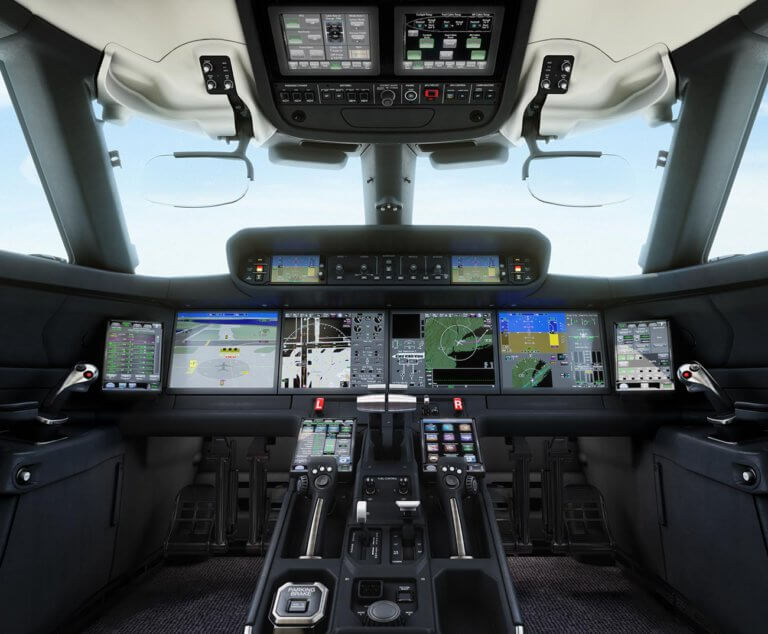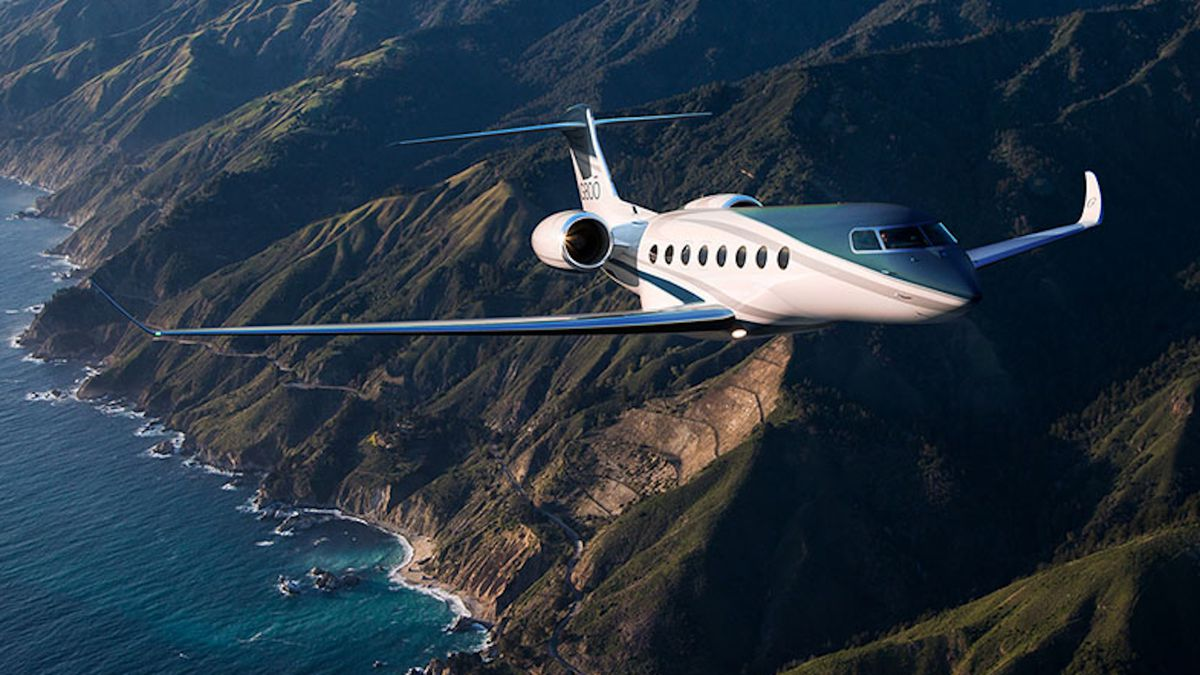The Gulfstream G800, the world's longest-range business aircraft, achieved a significant milestone with simultaneous type certifications from the U.S. Federal Aviation Administration (FAA) and the European Union Aviation Safety Agency (EASA) on April 16, 2025. This dual certification validates the aircraft's compliance with stringent safety and performance standards and underscores its enhanced capabilities, which exceed original projections. The G800's entry into service establishes a new benchmark in ultra-long-range travel, offering unprecedented range, speed, and cabin innovations that significantly advance the standards of international business aviation.
The G800’s certification culminates a rigorous testing program that began with its maiden flight in June 2022. Gulfstream’s collaboration with regulatory bodies ensured that the aircraft met evolving safety, efficiency, and environmental performance standards. Notably, the certifications arrived with performance metrics surpassing initial estimates, a testament to Gulfstream’s engineering precision and iterative testing. Gulfstream President Mark Burns emphasized the achievement as a reflection of the company’s commitment to pushing boundaries while maintaining the highest safety standards.
This milestone is strategically significant for Gulfstream’s parent company, General Dynamics, which aims to deliver 150 aircraft in 2025, including the first G800s in June. The certifications position Gulfstream to compete aggressively against rivals like the Bombardier Global 7500, which offers a range of 7,700 nautical miles. By securing both FAA and EASA approvals simultaneously, Gulfstream streamlines global market entry, ensuring seamless operations across transatlantic routes.
Enhanced Performance Metrics: Redefining Range and Efficiency
The G800’s standout feature is its extraordinary range, achieved through advanced aerodynamics and propulsion. Certified to fly 8,200 nautical miles (15,186 km) at Mach 0.85, the aircraft outperforms initial projections by 200 nautical miles. At high-speed cruise (Mach 0.90), it covers 7,000 nm (12,964 km), while an optimized Mach 0.87 cruise extends the range to 8,000 nm (14,816 km). This flexibility allows operators to prioritize speed or fuel efficiency based on mission requirements. The maximum operating speed increased to Mach 0.935, enabling faster transcontinental flights.
The G800’s improved performance extends to runway requirements. Under standard conditions, with a balanced field takeoff distance of 5,812 feet (1,771 meters) and a landing distance of 3,105 feet (946 meters), the aircraft gains access to smaller airports previously inaccessible to ultra-long-range jets. This capability enhances operational flexibility, particularly in regions with limited infrastructure.
The G800’s efficiency stems from its Rolls-Royce Pearl 700 engines and Gulfstream’s proprietary wing design. These engines, certified with 100% sustainable aviation fuel (SAF), reduce carbon emissions while delivering 81.20 kN of thrust each. Gulfstream’s focus on fuel efficiency aligns with industry-wide sustainability goals, positioning the G800 as a leader in eco-conscious business travel.
Cabin Innovation: Elevating Passenger Experience

The G800’s cabin sets new standards for passenger well-being. It features the lowest cabin altitude in the industry (2,840 feet at 41,000 feet cruising altitude), reducing fatigue during long flights. A plasma ionization air purification system ensures 100% fresh air circulation, while 16 Gulfstream Panoramic Oval windows flood the cabin with natural light.
Operators can customize the cabin to have up to four living areas, three zones, and a dedicated crew compartment. The ultra galley includes advanced refrigeration, cooking appliances, and storage, supporting extended missions without compromising comfort. With seating for 19 passengers and sleeping accommodations for 10, the G800 caters to corporate and personal travel needs.
Gulfstream’s whisper-quiet interior, achieved through sound-dampening materials and aerodynamic design, ensures a tranquil environment. Ergonomic seating and circadian lighting systems further enhance passenger comfort, aligning with chronobiology principles to mitigate jet lag.
Engineering and Design Excellence
The G800’s performance derives from its advanced wing and winglet design, which optimizes lift-to-drag ratios at high speeds. Computational fluid dynamics (CFD) and wind-tunnel testing refined the airframe to minimize drag, contributing to the aircraft’s 8,200 nm range.
The Gulfstream Symmetry Flight Deck™ integrates dual head-up displays (HUDs) with a Combined Vision System (CVS), merging enhanced and synthetic vision for superior situational awareness. This technology enables operations in low-visibility conditions, expanding access to challenging airports.

Before certification, Gulfstream conducted over 1,400 hours of flight tests across three prototypes. The cabin test aircraft, outfitted with complete interiors, underwent trials simulating extreme temperatures, turbulence, and overnight missions to validate system durability. These efforts ensured the G800’s readiness for diverse operational environments.
Market Impact and Future Deliveries
The Gulfstream G800's certification represents a significant shift in the competitive landscape of ultra-long-range business jets. With its newly certified 8,200 nautical mile range, the G800 now stands as the undisputed range leader in this exclusive market segment, catering to international travelers requiring non-stop capabilities for the world's longest business routes.
The G800's primary competitor, the Bombardier Global 7500, has dominated the ultra-long-range market since its introduction. With a range of 7,700 nautical miles, the Global 7500 has established itself as a premier option for intercontinental travel, connecting Singapore to San Francisco or Miami to Dubai without stopping. Like the G800, it features a four-zone cabin configuration with a full-size kitchen and dedicated crew suite, accommodating up to 19 passengers. However, the G800's additional 500 nautical miles of range now enables previously impossible routes without refueling.
The competitive dynamics extend beyond just Bombardier. Dassault's upcoming Falcon 10X, scheduled to enter service in 2025, aims to challenge Gulfstream and Bombardier with its 7,500 nautical mile range and Mach 0.925 maximum speed. The Falcon 10X differentiates itself with what Dassault claims will be the widest cabin in business aviation and highly efficient Rolls-Royce Pearl 10X engines delivering over 18,000 pounds of thrust.
Within Gulfstream's lineup, the G800 builds upon technologies introduced in the G650ER (7,500 nm range) and shares systems with the forthcoming G700 (7,750 nm range). While the G700 offers a longer cabin with additional windows, the G800 prioritizes maximum range in a slightly more compact airframe. This strategic positioning allows Gulfstream to target different segments of the ultra-long-range market with complementary offerings.
The certification timing is particularly significant as Bombardier prepares to introduce its Global 8000, which promises to match the G800's original 8,000 nm range specification. However, with the G800's range now certified at 8,200 nm, exceeding its initial projections, Gulfstream has established a new benchmark that competitors must surpass.
From an operational perspective, the G800's increased range transforms route planning for operators. While the Global 7500 can connect London to Singapore, the G800's additional range allows for more favorable routing, greater fuel reserves, or the ability to maintain higher speeds throughout longer flights. This advantage is particularly valuable when considering challenging routes affected by headwinds or where alternate airports are limited.
At an estimated $72.5 million price point, the G800 commands a premium but delivers unprecedented capabilities that redefine what's possible in business aviation. As the only ultra-long-range jet currently certified with an 8,000+ nautical mile range, the G800 enters service with a distinct competitive advantage in a market segment where range capabilities directly correlate with operational flexibility and time savings for the world's most demanding travelers.
Gulfstream plans to commence customer deliveries in June 2025, coinciding with the phase-out of the G650. The company’s Savannah facility, equipped with advanced manufacturing technologies, aims to produce 150 aircraft in 2025, with the G800 comprising a significant portion. Supply chain challenges, however, necessitate a cautious approach to scaling production.
For operators, the G800’s range reduces the need for fuel stops on routes such as New York to Hong Kong or London to Sydney, saving up to 1.5 hours on transoceanic flights. Lower operating costs per nautical mile and access to smaller airports enhance the aircraft’s appeal for corporate flight departments and charter services.
Conclusion: Charting the Future of Business Aviation
The dual FAA and EASA certification of the Gulfstream G800 marks a significant milestone in the evolution of ultra-long-range business aircraft. By achieving and exceeding its projected performance metrics, most notably its certified 8,200 nautical mile range and enhanced operating speeds, the G800 establishes a new benchmark in an increasingly competitive market segment. This achievement reflects Gulfstream's engineering precision and commitment to pushing performance boundaries while maintaining stringent safety standards.
The G800's enhanced capabilities translate to practical advantages for operators: greater operational flexibility, improved fuel efficiency, and a cabin environment designed to reduce passenger fatigue during the world's longest business routes. These benefits address the evolving needs of international business travelers who increasingly demand efficient global mobility without compromising comfort or sustainability.
As Gulfstream transitions to full-scale production at its Savannah facility, the industry will closely monitor how the G800's enhanced capabilities influence route planning, operational economics, and competitive dynamics across the ultra-long-range segment. The aircraft's success will ultimately be measured by its impressive specifications and how effectively it serves the practical needs of the most demanding global travelers while addressing the aviation industry's ongoing commitment to environmental responsibility.




